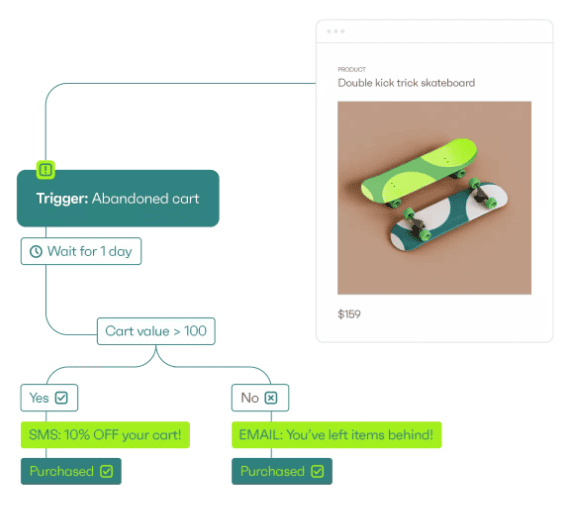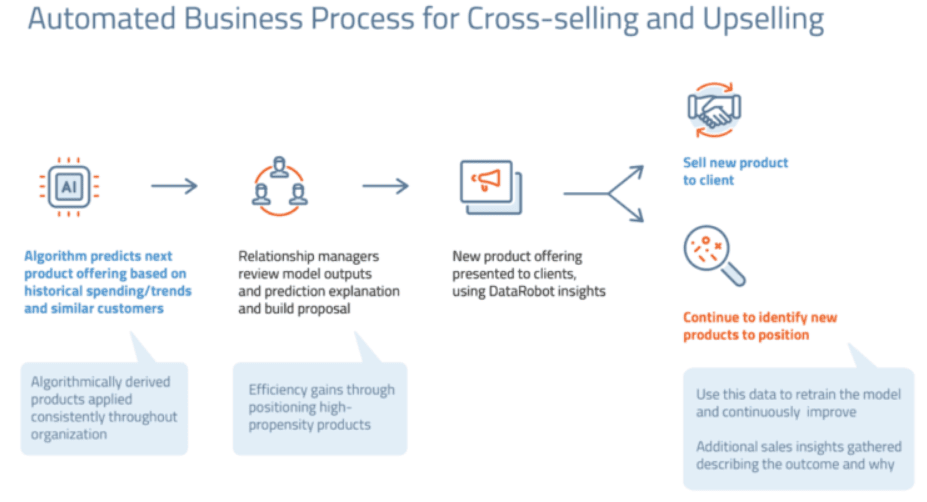Cross-selling and upselling are powerful strategies to increase revenue and enhance customer satisfaction. By automating these processes, you can streamline your sales efforts, improve efficiency, and maximize your business potential.
Understanding Cross-Selling and Upselling
- Cross-Selling: Recommending complementary products or services to existing customers.
- Upselling: Encouraging customers to purchase a higher-priced or upgraded version of a product.
Benefits of Automated Cross-Selling and Upselling
- Increased Revenue: Boost your bottom line by maximizing the value of each customer.
- Improved Customer Satisfaction: Offer personalized recommendations that meet customers' needs.
- Enhanced Customer Loyalty: Foster stronger relationships by providing additional value.
- Efficient Resource Allocation: Automate time-consuming tasks, allowing your sales team to focus on high-value activities

CRM Automations for Cross-Selling and Upselling
- Product Recommendations: Use purchase history and customer data to suggest relevant products or services.
- Targeted Offers: Create personalized offers based on customer preferences and behavior.
- Cart Abandonment Recovery: Send automated emails to customers who leave items in their shopping cart.
- Upsell Opportunities: Offer upgraded versions of products or additional features.
- Post-Purchase Follow-Up: Suggest complementary products or services after a purchase.
Campaign Flows and Techniques
Scenario 1: E-commerce Cross-Selling
- Trigger: Customer purchases a product.
- Automation: Send a follow-up email recommending complementary products or accessories.
- Personalization: Tailor recommendations based on the customer's purchase history and preferences.
Scenario 2: B2B Upselling
- Trigger: Customer reaches end of contract term.
- Automation: Offer an upgraded version of the product or additional features at a discounted rate.
- Personalization: Highlight the benefits of the upgraded version and how it aligns with the customer's goals.
Scenario 3: Service-Based Upselling
- Trigger: Customer shows interest in a new service.
- Automation: Provide a personalized offer for the new service, highlighting the benefits and how it complements existing services.
- Personalization: Tailor the offer based on the customer's specific needs and budget.
Best Practices for Effective Automations
- Personalization: Tailor recommendations based on individual customer profiles.
- Timing: Send automated emails at the right time to maximize engagement.
- Testing and Optimization: Continuously test and refine your automations to improve results.
- Integration with CRM: Ensure seamless integration with your CRM system for accurate data and personalized recommendations.
- A/B Testing: Experiment with different subject lines, content, and offers to identify the most effective approaches.
Measuring Success
To evaluate the effectiveness of your cross-selling and upselling automations, track the following metrics:
- Increased revenue: Measure the additional revenue generated through cross-selling and upselling.
- Customer satisfaction: Monitor customer feedback and satisfaction ratings.
- Conversion rates: Track the percentage of customers who purchase recommended products or services.
- Return on investment (ROI): Calculate the ROI of your cross-selling and upselling efforts.
Key Industry Specific Cases
- E-commerce: Suggest accessories or complementary products to customers who purchase a main product.
- Software-as-a-Service (SaaS): Offer premium features or add-ons to existing customers.
- Consulting Firms and/or Subscription Services: Recommend higher-tier subscriptions or additional services.
CRM automations play an absolutely vital role for cross-selling and upselling, you can unlock new revenue streams, deepen customer relationships, and drive your business forward. By implementing effective CRM automations, you can unlock the full potential of cross-selling and upselling, driving increased revenue and enhancing customer satisfaction.


